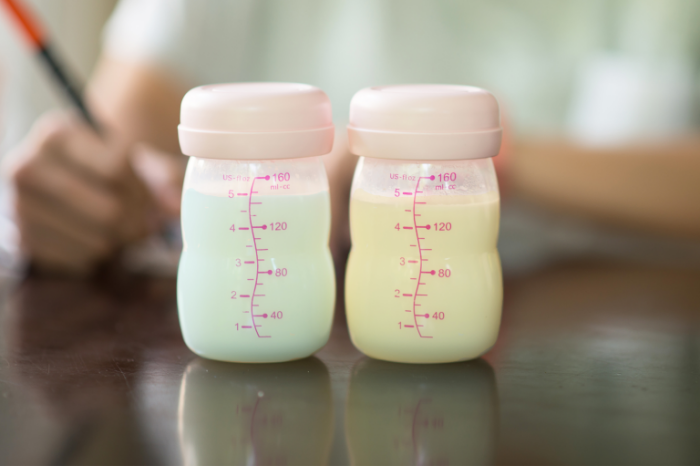Breastfeeding is a beautiful journey. It provides essential nutrition for babies. One important aspect of breastfeeding is the difference between foremilk and hindmilk. Understanding hindmilk can help parents support their babies’ health. This article explores what are the benefits of hindmilk, and how to ensure babies get enough of it.
Understanding Foremilk and Hindmilk
Breast milk is not uniform. It changes during a feeding session. At the start of breastfeeding, the milk is called foremilk. Foremilk is thinner and more watery. It helps quench thirst. As the feeding continues, the milk transitions to hindmilk. Hindmilk is richer and creamier. It contains more fat and calories.
The Composition of Hindmilk
Hindmilk has a higher fat content compared to foremilk. This fat is crucial for a baby’s growth and development. The fat in hindmilk provides energy and supports brain development. Babies need this nutrient-dense milk for healthy weight gain.
Why Hindmilk is Important
Hindmilk plays a vital role in breastfeeding. It provides key nutrients that help babies thrive. Here are some reasons why hindmilk is important:
Supports Healthy Weight Gain
Hindmilk is calorie-dense. Babies who consume enough hindmilk are more likely to gain weight appropriately. Weight gain is a sign of good health in infants. It indicates they are getting the right nutrients.
Enhances Brain Development
The fat in hindmilk is essential for brain development. Healthy fats support cognitive function. They help with memory and learning. Babies who receive enough hindmilk may have better developmental outcomes.
Keeps Babies Full and Satisfied
Hindmilk can help keep babies full for longer periods. The richness of hindmilk makes it more satisfying. This can lead to longer intervals between feedings. A full baby is often a happy baby.
How to Ensure Your Baby Gets Enough Hindmilk
Getting enough hindmilk is crucial for your baby’s health. Here are some tips for ensuring they receive this nutrient-rich milk:
Allow Extended Feedings
Let your baby nurse for longer periods. This allows them to transition from foremilk to hindmilk. Aim for each feeding to last about 20 to 30 minutes. This helps ensure they get the creamier milk.
Offer One Breast at a Time
When breastfeeding, consider offering one breast per feeding. This helps your baby access more hindmilk. Switching breasts too early can mean they only get foremilk. Allow them to finish one side before offering the other.
Watch for Signs of Fullness
Pay attention to your baby’s cues. Signs of fullness include turning away from the breast or becoming sleepy. If your baby shows these signs, they may have had enough hindmilk. Trust their instincts.
The Role of Hindmilk in Preventing Jaundice
Jaundice is common in newborns. It happens when there is too much bilirubin in the blood. Hindmilk can play a role in preventing jaundice. The high-fat content helps with the metabolism of bilirubin.
Energy for Metabolism
The fat in hindmilk provides energy. This energy is important for the baby’s liver. A healthy liver helps process bilirubin more effectively. By getting enough hindmilk, babies may have a lower risk of developing jaundice.
Hindmilk and Digestive Health
Hindmilk is not just beneficial for weight gain and brain development. It also supports digestive health. The fatty acids in hindmilk help with digestion.
Promotes Healthy Gut Flora
The fats in hindmilk can promote healthy gut bacteria. A balanced gut microbiome is important for overall health. It aids in nutrient absorption and boosts the immune system. Healthy digestion can lead to fewer tummy troubles.
Reduces Risk of Constipation
Hindmilk can help prevent constipation in babies. The fat content helps soften stools. Babies who get enough hindmilk may have more regular bowel movements. This can lead to less discomfort.
Hindmilk and Immune Support
Breast milk contains antibodies. These help protect babies from infections. Hindmilk also contributes to this immune support.
Rich in Antibodies
Hindmilk is rich in immunoglobulins. These are antibodies that help fight off infections. By receiving enough hindmilk, babies get added protection during their early months.
Supports Overall Health
The combination of nutrients in hindmilk supports overall health. A strong immune system is vital for babies. It helps them thrive and grow. Healthy babies are less likely to get sick.
See also: What Are The Benefits Of Lecithin While Breastfeeding
Conclusion
Hindmilk is an important part of breastfeeding. It offers numerous benefits for babies, including healthy weight gain, brain development, and digestive health. Ensuring your baby gets enough hindmilk involves allowing longer feedings and offering one breast at a time.
By understanding the importance of hindmilk, parents can support their baby’s growth and development. The journey of breastfeeding is unique for each mother and baby. With the right knowledge and practices, you can help your baby thrive. Embrace the beautiful experience of breastfeeding and enjoy the bond it creates.
Related topics:


